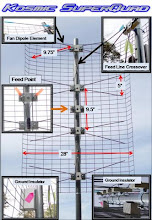The Wall Street Journal, January 5, 2010
Creative destruction and a new scramble for America's couch potatoes.
excerpt...
In this world, Fox Broadcasting's victory Friday in winning retransmission fees from Time Warner Cable might seem a case of one corpse feeding on another, slightly healthier corpse. Broadcasters are supposed to be on suicide watch because they lack even cable's dual revenue streams (advertising and subscription). But the free-to-air TV distributors may yet have a card up their sleeves.
... live-transmission TV doesn't make much sense in an on-demand world—that is, except news and sports, the only programming that large numbers of people are likely to want to consume at exactly the same moment.
It just so happens that over-the-air broadcasters, now that they have multiple, crystalline hi-def digital channels at their disposal, may prove the best way to deliver live programming over a given geographical area. After a recent column on this subject, several readers emailed to say they've already dropped cable and now get their video from a combination of free HDTV plus on-demand downloads from the likes of Netflix, iTunes or Amazon.
And surely one of Ben Bernanke's unenumerated greenshoots lately has been the unexpected surge in HDTV antenna sales since last year's digital switch. Look to Western Europe, where the digital transition began earlier. Viewers willing to rely on over-the-air digital broadcast TV have grown to 42 million from 31 million in three years, according to the International Television Expert Group. They are expected to hit 59 million in 2013. A new European standard-setting body called HbbTV (for hybrid broadcast-broadband TV) has even been launched to consecrate the wedding of on-demand and over-the-air.
snip...
In the long run, we wouldn't care to bet which programming aggregator will be a winner, but here's a guess at what TV viewing will look in five years: You will point an iPhone-like device at the nearest screen in order to play any kind of video, whether stored on the device's own memory, downloaded from a third-party site or plucked from an over-the-air signal.
Somehow, too, programmers will get paid, or there won't be programming. One thing is also clear: If you're playing in this sandbox, there is no better leverage than owning rights to college and professional football, especially during bowl season.









.jpg)








No comments:
Post a Comment